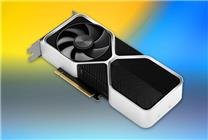Intel’s Confidence in the 14A Process: Overcoming Challenges in Advanced Lithography
Summary:
- Intel plans to mass-produce the 18A process, setting the stage for the subsequent 14A technology.
- The 14A process will utilize the cutting-edge ASML Twinscan NXE:5000 EUV lithography machine, significantly boosting performance.
- Despite financial hurdles, Intel believes the 14A process will attract customers, although it comes at a steep cost.
Intel is poised for a significant technological advancement with its planned mass production of the 18A process, a crucial step in its ambitious four-year roadmap that encompasses five generations of semiconductor production. This progression is not merely about improving performance; it also represents a strategic effort to maintain Intel’s competitive edge within an increasingly complex marketplace. Set against the backdrop of evolving industry challenges, particularly those tied to financial stability, Intel’s confidence in its future technology offerings, particularly the 14A process, has sparked interest.
14A Technology: A Leap Forward
The forthcoming 14A process is expected to employ the advanced High NA EUV lithography machine from ASML, specifically the Twinscan NXE:5000 series. This next-generation equipment is notable for its numerical aperture (NA) increase to 0.55, thereby improving resolution and performance considerably at technology nodes below 2nm. With a price tag exceeding $400 million per unit—more than double the current price of $200 million for existing EUV machines—the investment required for 14A technology underscores both its premium positioning and the risks associated with its development.
Financial Considerations and Industry Outlook
Intel faces multiple challenges, primarily its current financial predicaments, which beg the question: can it sustain the building of a 14A process wafer factory effectively? The year 2026 has been earmarked as pivotal in determining the fate of this new technology, positioning it as both an opportunity and a potential risk for the company.
Despite skepticism among external observers, Intel has maintained a more optimistic stance regarding its 14A process. CFO David Zinsner has acknowledged the higher costs associated with the 14A compared to previous technologies, but he remains confident that there is enough market demand to justify the investment. This outlook is critical as advancements in technology often necessitate substantial financial commitments, particularly in sectors as capital-intensive as semiconductor manufacturing.
Demand for 14A Process
Intel’s belief in the viability of the 14A process attracting customers—even at a premium—is noteworthy. While the specifics regarding performance metrics and power consumption are yet to be broadly disseminated, the expectation that this technology can fulfill market demands remains strong. The integration of cutting-edge lithography technology is essential for manufacturing chips that meet increasing performance and energy efficiency standards.
Conclusion
As Intel navigates the complexities associated with the advanced 14A process, its focus on innovative lithography solutions positions the company in a potentially advantageous market space. The evolution towards 14A technology underlines a commitment to progress amidst financial uncertainties. Intel’s strategic vision aims not only to enhance its semiconductor offerings but also to ensure that it remains a key player in the competitive landscape of technology. As the company progresses towards 2026, the industry will closely monitor Intel’s initiatives and the reception of its advanced manufacturing processes.
In conclusion, while the challenges are significant, Intel’s confidence in its technology roadmap, particularly the 14A process, indicates a readiness to embrace the future of semiconductor innovation and meet customer demands head-on in a rapidly changing landscape.





